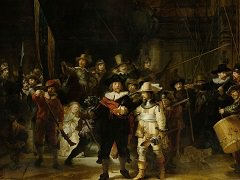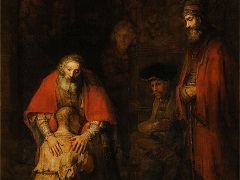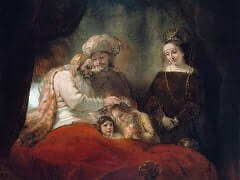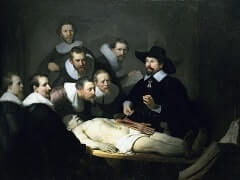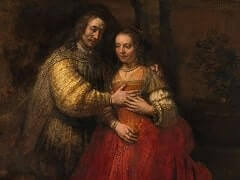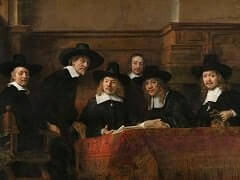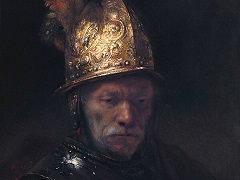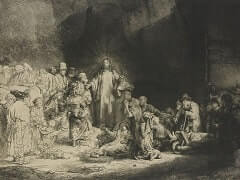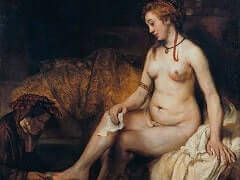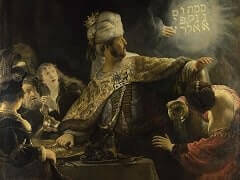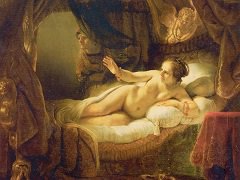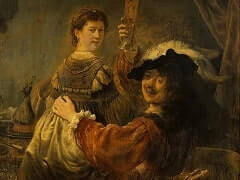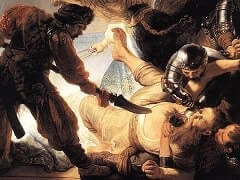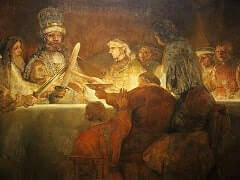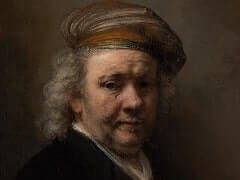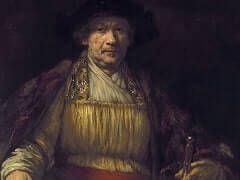Portrait of Frederick Rihel on Horseback, 1663 by Rembrandt
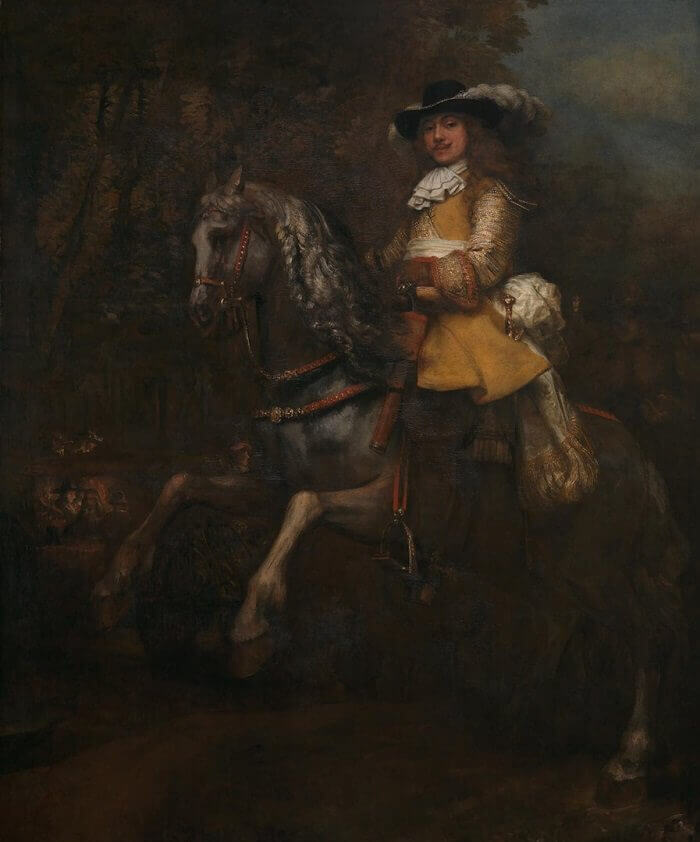
In 1663, Rembrandt had once again to mourn the loss of a loved one: Hendrickije Stoffels, the final companion of his life, died, styling herself in her will as the artist's "wife". For a few years, Rembrandt had been living in a modest house on the Rosengracht, having surrendered the comforts of the beautiful, large house on the Breestrat. In order to minimize his problems with the public revenue and his creditors, he had worked out a complicated legal strategy: he registered himself as a man of no property, defining himself a dependant of Hendrickije and his son Titus, who gave him board and lodging in exchange for his paintings and engravings, to which the two held the exclusive rights. Prices of his paintings thus started to rise once again, and he was increasingly admired abroad. Public commissions also resumed, but the artist remained destitute and was even forced to sell Saskia's tomb. Meanwhile, his style moved even closer to the memory of Titian.


